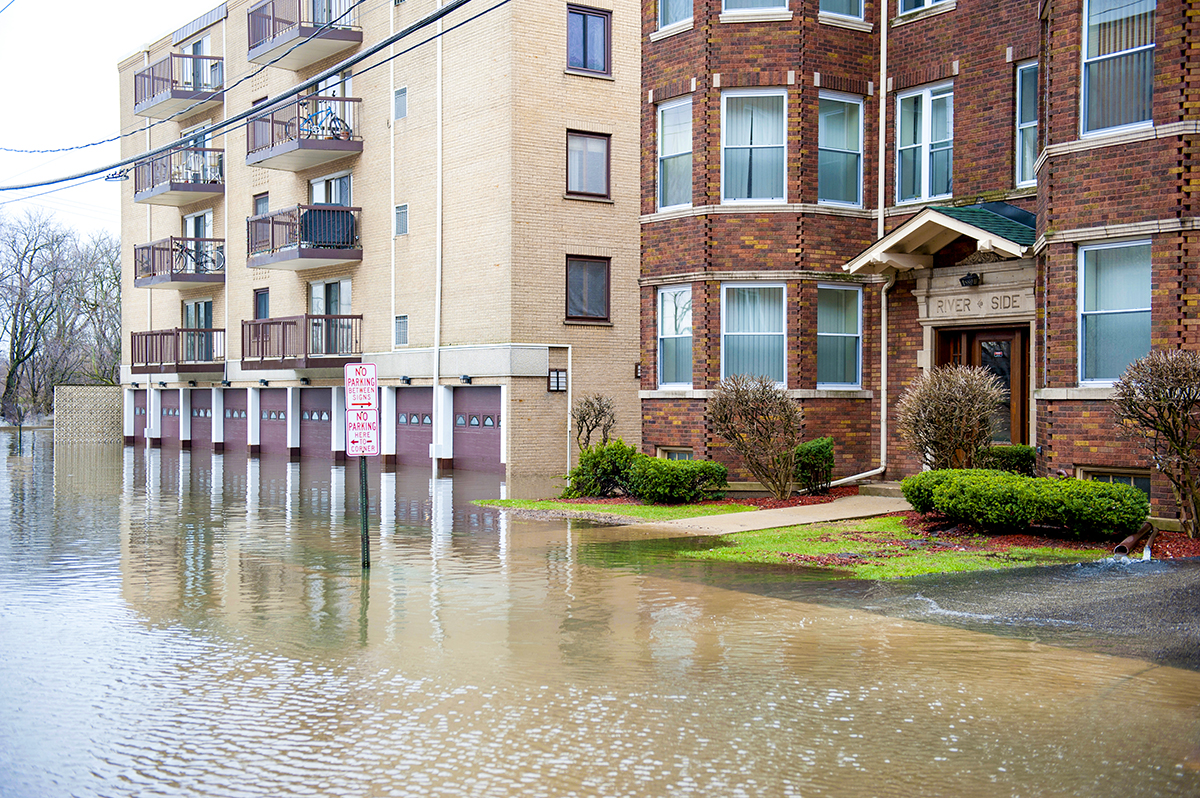Climate Resiliency Can Further Reduce Flood Risk Impacts on Multifamily Rents

With a lower share of inventory located in flood-prone areas, small buildings are more conservative in their risk profile and offer value for investment across the apartment market.
Resiliency and Risk Landscape for Small Buildings
Recent reports point to a counter-intuitive trend of how home prices and apartment rents are growing faster in flood prone areas. This trend is explained by the premium associated with scenic locations such as beach fronts and waterways, since they are also the most-prone to flooding. This varies across metro areas and asset class.
As shown below, based on data obtained from the American Housing Survey (AHS) 2015, around 8% of all small apartment building units in the United States were located within areas assessed with a high risk of flooding. In large buildings the share was slightly larger at 10%.
The risk assessment for apartment buildings and their units varies greatly across metro areas. The data indicates that small buildings displayed a tighter spread around the national average compared to large buildings. An indication of the preference for scenic, albeit riskier, locations characterize the latter group.
Houston and Miami fare the worst among the major metropolitan areas on high flood risk exposure, which impacts 30% of the large building inventory and 20% of small building units, a point that was unfortunately reinforced this past hurricane season.
The three largest coastal metros, New York, Los Angeles and San Francisco, have managed to keep exposure levels below half of these rates despite increasing growth pressures.
What are the Impacts on Apartment Rents?
Data also shows partial support for the counter-intuitive location and price relationship mentioned earlier.
As shown below, when indexed to the area-wide average rents within asset class, apartment rents in flood-prone areas are higher in the coastal metros, consistently for large buildings, and with qualification for small buildings.
New York and Boston show steep premiums on waterfront properties for large buildings, while Los Angeles, San Francisco and Boston show the highest mark ups for small properties.
While large properties take on more risk for amenities, small properties appear to have more conservative risk profiles of long-term returns for investors.

